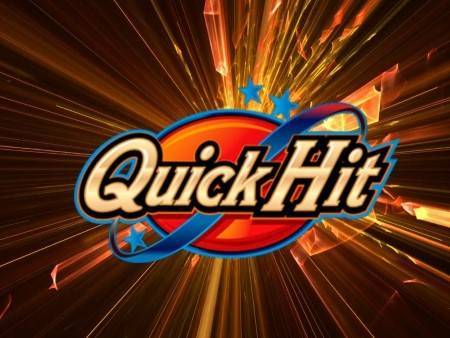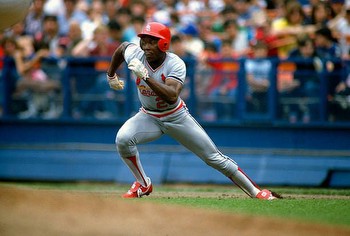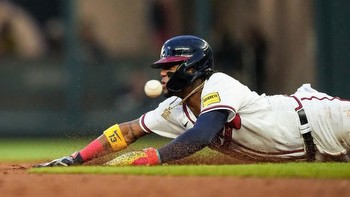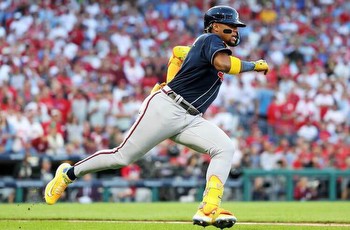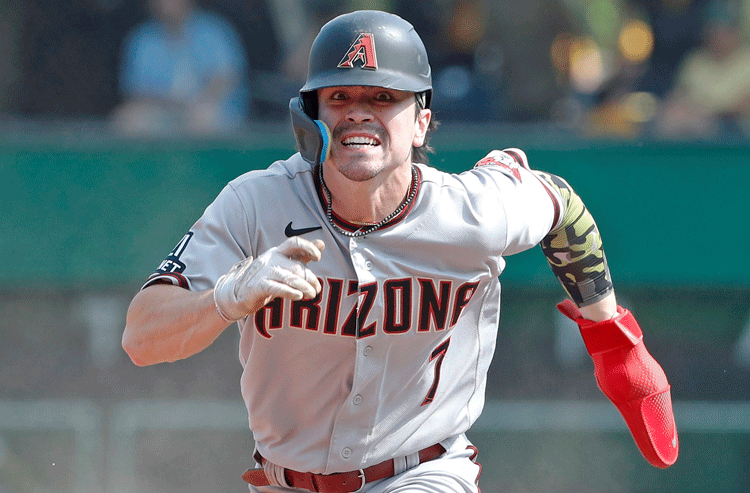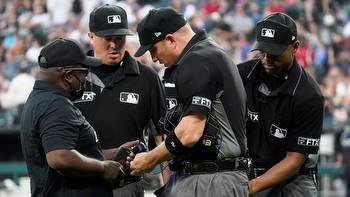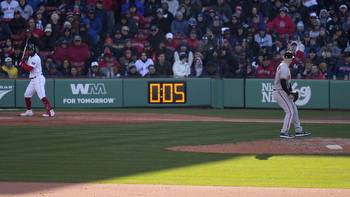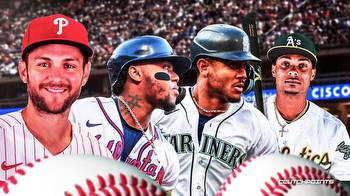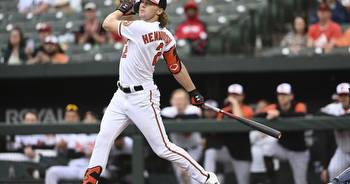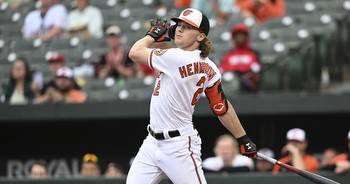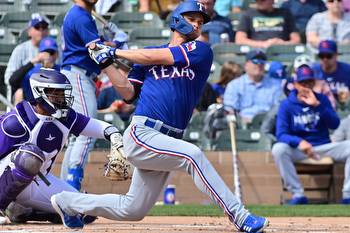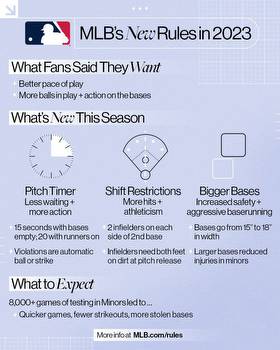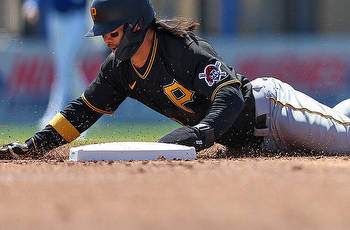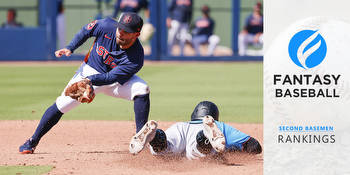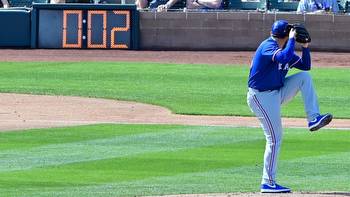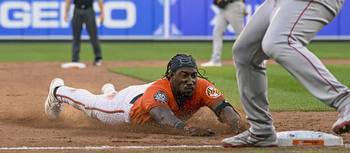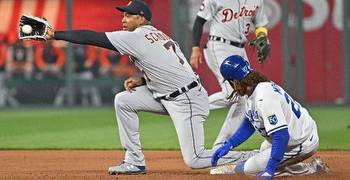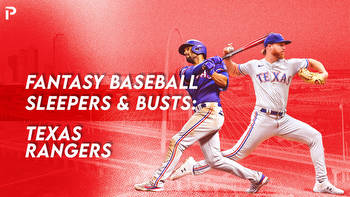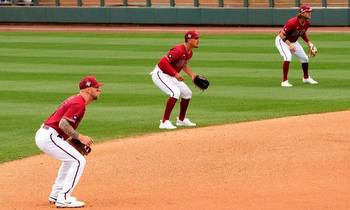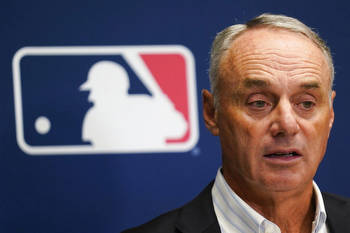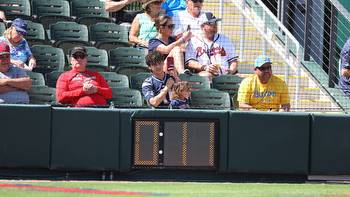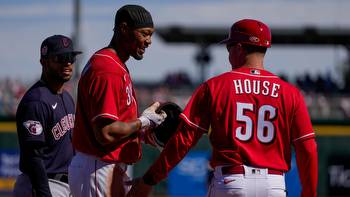2023 Fantasy Baseball Draft Prep: Get ready for stolen base chaos amid rule changes
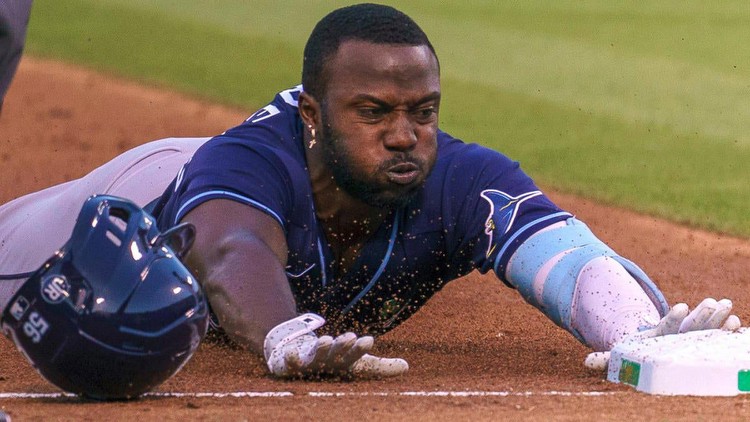
Welcome to draft prep season, that time of year when I'm expected to have all the answers.
And I'm happy to play along, for the most part. I'll offer my best guess as to how Oneil Cruz will perform, what the Yankees intend to do at shortstop and who's the best bet for AL Rookie of the Year. And Fantasy Baseball? Shoot, I'll tell you who to draft every round if you want.
Just don't ask me how many stolen bases anyone will have. That's a bridge too far.
Oh, you think that's within my capabilities, that I should be able to look at what's already been and develop a reasonable expectation for what's to be? Most years, I'd agree with you, but MLB is introducing a rule change this year that threatens to make all past stolen contributions moot. I'm talking something so transformative that the dataheads simply are not prepared for it.
By now, you've probably heard some rumblings about this, but you may not have seen all the dots connected. First, a little backstory ...
Baseball is undergoing a transformation that's quite deliberate, quite ambitious and I dare say quite overdue. The goal is to make it more watchable, and while the methods for achieving this goal are new, the end result should be a familiar one -- i.e., a game defined less by home runs and strikeouts and more by athletic plays in the field and on the base paths
What I'm calling Phase 1 of this transformation came the last two years, with a crackdown on sticky substances (once again a point of emphasis this year) to curb runaway strikeout totals and a de-juicing of the baseball to normalize runaway home run totals. What I'm calling Phase 2 begins this year with a whole slew of additional changes.
Dominating the headlines early this spring is one in particular, the pitch clock. It's the most pervasive change and the one that will take the most getting used to for players and viewers alike. But it's actually a subsection of that same rule that will have the biggest impact on the Fantasy game.
The operative word is "disengagements." Pitchers are allowed two per batter. Disengagements cover all manner of reasons for stepping off the pitching rubber, but chief among them are pickoff attempts. Two chances. That's all the pitcher gets.
Now, you might think that's all he needs. It's not so often we see a pitcher fall into a rut of throwing to first base over and over again with the same batter at the plate -- sometimes, yeah, but not enough that we'll miss it. If you think behaviors won't change in light of this rule, though, then you don't understand the inner workings of competitive people.
Now a runner has incentive to make a pitcher throw over twice, because after that second one comes in, it's off to the races, more or less. A pitcher can throw over a third time still, but he won't unless he's sure he can nail the runner. Because if he doesn't nail the runner, it's a balk.
So what you can expect to see are bigger leads, taken for the purpose of even bigger leads, taken for the purpose of, well, taking off.
Don't believe me? That's how it played out in the minors. In 2019, the last full year without the pickoff limit, there were 2.23 stolen base attempts per game. Last year, there were 2.83. Moreover, the success rate on stolen bases went from 68 to 77 percent.
MLB knows players will run more in light of this rule change. It's a feature, not a bug. Their own research suggests that an increase at the major-league level commensurate with that in the minors would return the league to stolen base numbers like those of the early 2000s.
So let's look back at the earliest of the 2000s, the very year 2000. Back then, Luis Castillo (no, the other one) led the majors with 62 stolen bases, and two other players had at least 50. Last year, Jon Berti led the majors with 41 stolen bases, and no other player had even 40. Meanwhile, 42 players stole 20 or more bases in 2000 compared to just 24 last year.
And here's the thing: I think the increase in the majors could go beyond even that in the minors, taking us back to levels we haven't seen since ... gosh, who knows when? The *Moneyball* era brought an emphasis on efficiency that caused stolen bases to fall out of favor, at least in the majors. The majors are all about winning, of course, and in the name of winning, the risk calculation for stealing a base was generally deemed not worth it. The minors are more like an individual showcase, where players push limits for the sake of development. This includes stealing more bases, even when the risk of being caught is higher. Comparatively speaking, minor-leaguers were already running wild.
Quite simply, there's more room for major-league totals to improve when they were being suppressed in the first place. You know how I said the minor-league success improved from 68 to 77 percent with these rule changes? Well, the major-league success rate was already 75 percent last year, which says less about how much better the major-leaguers are than how much they are. What if these rule changes improve that rate to 80 percent or higher? Certainly the risk calculation would change then. If stolen bases go from being considered a risky proposition to a rewarding one, then whew, I don't think we can even imagine the amount of increase in store.
So what does this mean for the Fantasy game? First, allow me to point out that it means much more in leagues that use traditional 5x5 scoring (such as Rotisserie), where stolen bases are their own essential category, than point scoring, where stolen bases are valuable but inessential. In those 5x5 leagues where stolen bases are of the greatest import, what I'm seeing is that attitudes toward them haven't changed at all. It's not a secret that they're about to become more plentiful -- everyone in the pundit class has paid lip service to it -- but not everyone has accounted for it appropriately, or at all.
A deprogramming is in order, and I'd argue that was true even before the announcement of these rule changes. What defined the past era even more than stolen base scarcity was home run surplus. The disparate availability of those two starts led to stolen bases having outsized importance in drafts, such that the expectation was to draft whatever base-stealers you could until they were all gone, all other considerations being secondary. Judging from ADP, that's still the expectation.
But it shouldn't be. Stage 1 of MLB's plan, the de-juicing of the baseball and reduction of home runs, eliminates half the incentive for selling out for steals. Home runs aren't as plentiful anymore, which means, in relation, stolen bases aren't as scarce. Here's the ratio of stolen bases for every home run going all the way back to 2000:
A couple things stand out here. One is that the early 2000s got nothing on the early 2010s when it comes to stolen base prevalence. How quickly we all forget. The other is that the three-year period prior to last year is a clear outlier for stolen base scarcity, and it seems to me that's still the period we're most acclimated to. Last year was a big step in the other direction, and it stands to reason an even bigger step is coming this year.
So what would the ratio be if we combined the stolen bases from 2000 with the home runs from 2022? Try 56.1, which would compare to some of the highest ratios from the past 23 years. And again, I think the increase could push us past that 2000 range, even.
"That's all well and good," you may be thinking, "but if drafting behaviors aren't changing to reflect this new reality, then aren't I stuck doing the same thing, too? I still can't afford to get squeezed out of stolen bases, after all." Sure, but that all depends on how this stolen base increase manifests. I don't think it'll be just an intensifier for the few who are already good at it. The expected increase is way too big to be distributed among so few. More likely, it's going to make stolen bases available to a group that was previously left out.
Just like the juiced ball era led to a democratization of home runs, I'm expecting a democratization of stolen bases. We'll see players who weren't previously a factor suddenly contributing 12, 15 or even 20-plus, which will make those early-round investments in steals less rewarding. Incidentally, that's also why I'm not comfortable projecting anyone's stolen base total for 2023. It's impossible to say where these new sources will spring up. I can make an educated guess based on factors like sprint speed, but the correlation between speed and acting on that speed has never been particularly strong.
So what am I asking you to do with this information? In short, don't stress so much about stolen bases in 5x5 drafts. If you can get a reliable base-stealer that doesn't require you to sacrifice much in other areas -- and certainly in Round 1, that's possible -- then great. Have at it. The more, the merrier. But if you make it your primary focus just because that's how you're used to handling stolen bases, then you may wind up with too much of it and not enough of everything else by the time the final tally comes in. It's why I'm prioritizing Kyle Schwarber over Randy Arozarena and Corey Seager over Cedric Mullins.
Plus, as I've written elsewhere, the end of the juiced ball era has also brought the return of position scarcity, and that Austin Riley over, say, Bo Bichette.
The juiced ball era began without warning in 2016, transforming the Fantasy game so completely that longstanding axioms were turned upside-down. And in the fog of war, trying to ascertain which way was up, I took more lumps that I'm used to, I'm willing to admit. But for this next sea change, we do have warning. MLB has told us what it's doing and why. I don't want to get caught swimming upstream again just because I'm unsure of the particulars. The generalities indicate enough for me to change my approach.
And if it happens a year before everyone else catches on, it could be a good year indeed.
